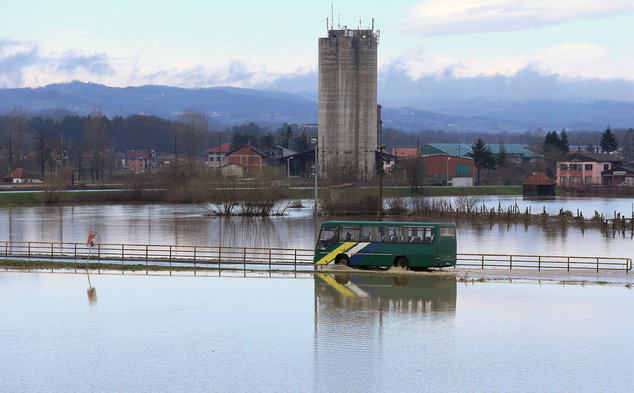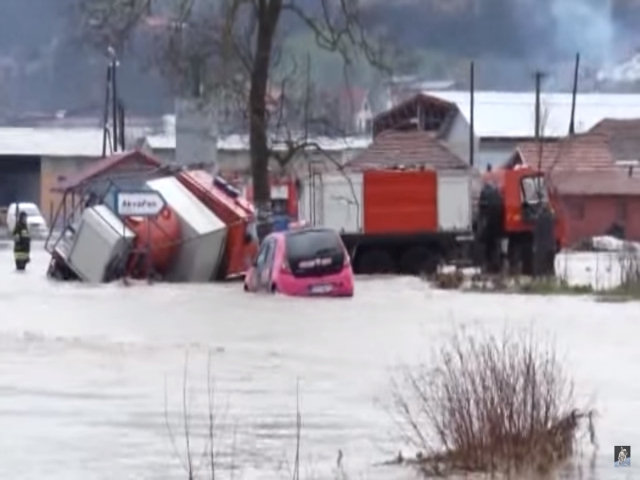The Serbian Interior Ministry declared an emergency situation on Monday in the flood-affected Cacak, Lucani and Arilje municipalities.
There were also landslides caused by the deluge in the Bajina Basta municipality, where several homes were submerged and roads damaged.
In Preljine near Cacak, where about 80 millimetres of rain per square metre fell overnight, the River Cemernica broke its banks, resulting in the evacuation of 15 people, Emergency Situations Sector chief Predrag Maric said.
Matic also said that water levels were rising in major rivers elsewhere in Serbia, but that serious problems were not expected there.
"We contacted the Serbian Army to get involved, and prepared if necessary to evacuate people," he said.
He said that the Kosjeric, Arilje and Cacak municipalities saw flash flooding, but had been forewarned on Friday that this might happen.
The River Bjelica flooded and shut down the road from Lucani to Guca and the the road from Guca to Cacak.
Meanwhile in Guca itself, the Milan Blagojevic factory, the local healthcare centre, a hospital, a school and the main power station were all flooded.

The Hydro-Meteorological Institute warned on Sunday evening that Serbia could expect a further downpour ranging from 20 to 40 millimetres of rain per square metre on Monday in southern, central, and eastern areas, and that road traffic could be disrupted as a result.
In May 2014, the country was hit by series of floods affecting 39 out of 120 municipalities, forcing more than 30,000 people from their homes and damaging or destroying roads, railways, bridges, homes, power plants and telecommunications infrastructure.
The floods came after heavy rainfall and a powerful cyclone that swept through the central part of the Balkan Peninsula.
Obrenovac, a small town south of Belgrade, suffered the most from the floods.

This included the damage to homes, infrastructure, agriculture and educational and other facilities.
The authorities said 485 houses were completely destroyed by the deluge and 12,000 hectares of land became usable for agricultural production in the following season.




Reader Comments
to our Newsletter